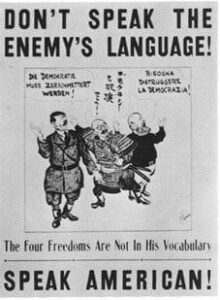America After the Attack
It didn’t take long for the attack on Pearl Harbor to change the United States in major ways. An overwhelming amount of support for joining World War II echoed throughout the country after the attack, and residents no longer felt the sense of security of being far away from the war; they suddenly realized that distance alone couldn't keep them safe. While the average American was focused more on supporting the war overseas, there were also domestic changes that, over the course of time, have been largely forgotten.
It’s not uncommon during times of duress that a country’s government will impose a series of rules, regulations, and acts to help keep its people safe. After the attack on Pearl Harbor, the United States was no exception, opting for stricter guidelines and restrictions to prevent another disaster like that of December 7th, 1941.
All throughout the country, towns and cities also took it upon themselves to impose their own regulations, sometimes taking things a step further than the government watching over them. Much changed in the country after Japan surprised Pearl Harbor, including some of the following regulations that came into effect soon after.
Changes Across the Country After the Attack
Paranoia spread, and it wasn’t uncommon for people across the country to look askance at foreign residents. Some locales ordered the seizure of radios and cameras from all foreigners. Considering a Japanese spy was able to live in Oahu and spy on the Navy without ever being caught, it made sense for Americans to feel a sense of unease when it came to natives—and even descendants—of countries the US was at war with. Further highlighting this widespread suspicion were cities that required residents from European and Asian enemy nations to prove that they were, in fact, United States nationals.
The Worst of It…
As these new rules spread across the country, something that was gaining even more momentum was a controversial move to place people of Japanese and German nationality or descent in internment camps. Those receiving the brunt of this attention were Japanese-Americans, who were funneled into camps. In February of 1942, President Roosevelt initiated Executive Order 9066, which forced Japanese-Americans to leave the west coast.
California, Idaho, Utah, Wyoming, Arkansas, Colorado, and Arizona were among the states that housed the country’s ten internment camps, which imprisoned approximately 120,000 people. It wasn’t until 1945 that Japanese-Americans who were loyal to the United States could begin to return to their former homes, but the camps were still operating.
By March of 1946—six months after the end of World War II—the last camp in the United States closed. Two years later, former prisoners who lost property were provided reimbursement, in hopes of rectifying the damage done during a time of paranoia and fear.








